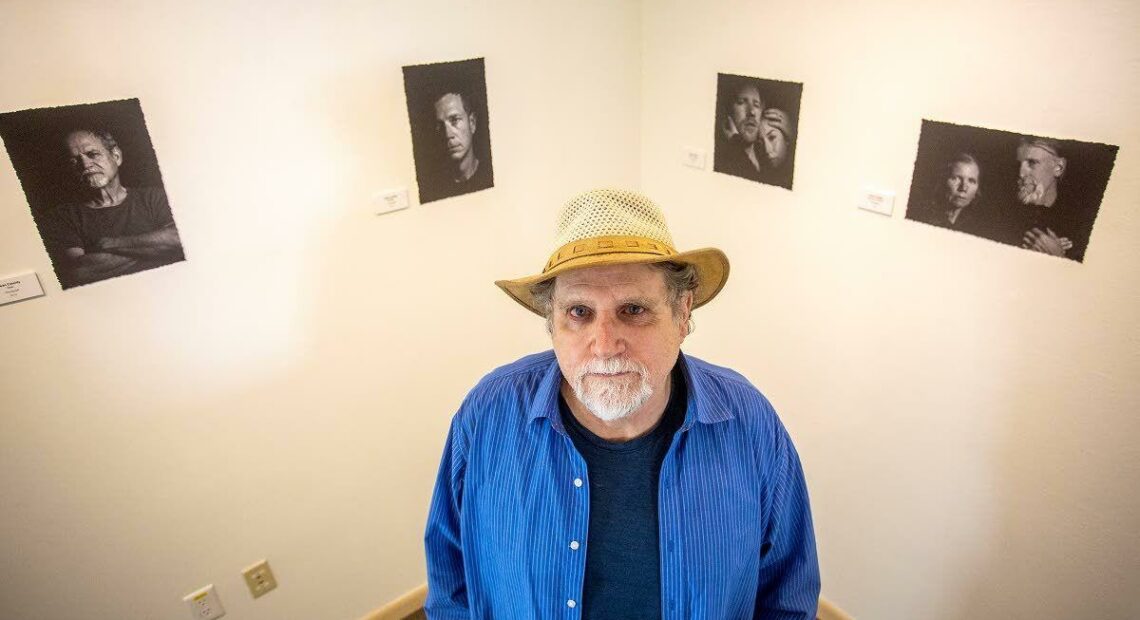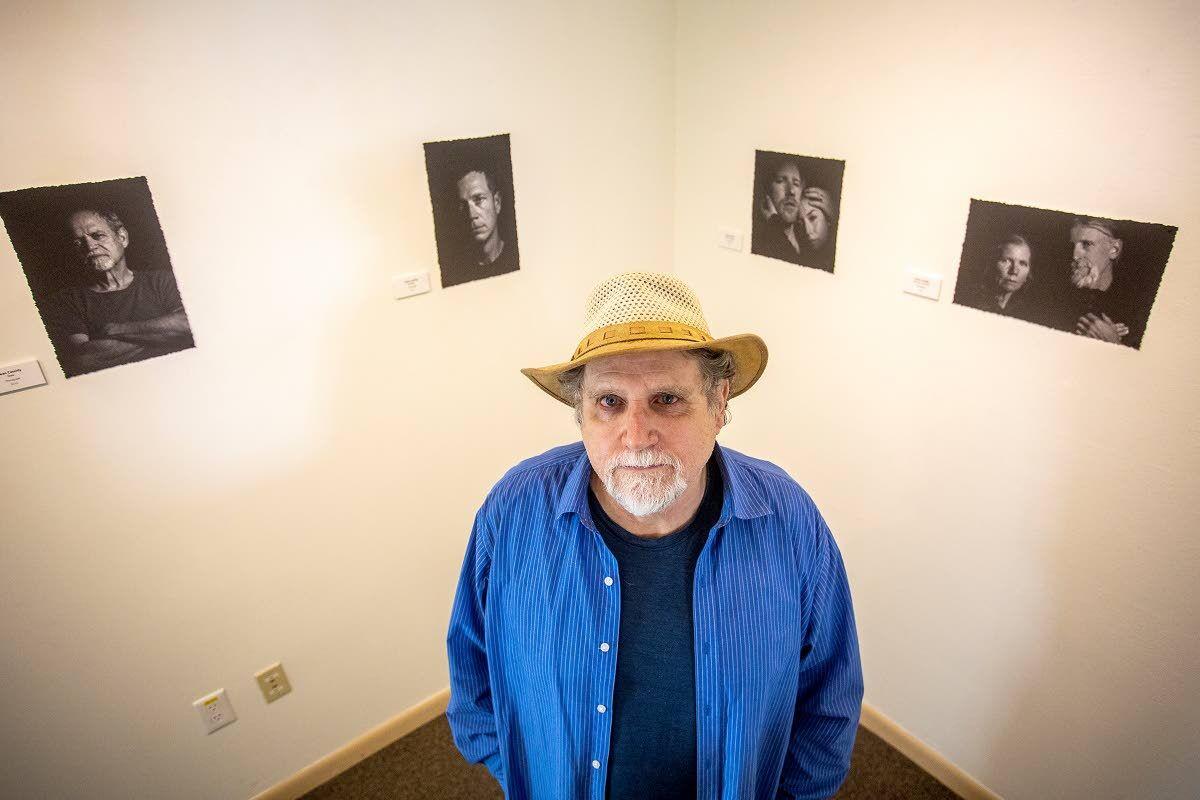
LCSC faculty, retirees speak out against abortion-related censorship
Listen
(Runtime 1:40)
Read
Some faculty and former professors at Lewis-Clark State College say the removal of several art installations in the Center for Arts & History’s “Unconditional Care” exhibition are a violation of free speech.
The art, removed by the college because of Idaho’s No Public Funds for Abortion Act, include a cross stitch depicting mifepristone and misoprostol pills used in medication abortion and accompanying text with information on the medication.
Other items removed included a text explaining Idaho’s abortion laws, a video with interviews of women discussing reproductive health care, including abortion, and an embroidered transcription of a letter sent to Planned Parenthood founder Margaret Sanger that mentions abortion.
Sean Cassidy, a retired professor of humanities at the Lewiston college, has been gathering signatures on a letter condemning the removal of the artwork. As of Tuesday afternoon, he said he had 23 signatures in support from current or former faculty and students.
However, some current faculty have been hesitant to speak out publicly, Cassidy said. Fear of what might happen to the center has created a chilling effect.
“I think they’re just worried about what the repercussions will be not just to themselves, but to the center, to the college,” he said. “The state Legislature is known for not being nice to people they don’t like.”
Academic institutions, Cassidy said, serve a role cultivating discussion about controversial issues. In class, Cassidy said, he would worry bringing up the topic at all could be construed as advocating abortion.
“I was a teacher that taught art and censorship, among other things,” he said. “So I find this wonderfully ironic.”
Chris Norden, an emeritus professor of humanities at LCSC, said he finds the censorship especially egregious because it also censors factual, historical information about abortion, and individuals’ personal expression of their experience.
“What that’s doing is censoring American social history. That is to say, the history of women who sought abortions both legally and illegally,” he said. “That history needs to be documented.”
Limiting access to those materials also preemptively censors classroom discussions professors might have with their students about the work, Norden said.
“Discussions are limited preemptively by people who have very fixed opinions about what they want the public to believe and hold as personal values,” he said. “To begin with predetermined conclusions, that’s just contrary to my idea of what education should be in a free democratic society.”
Harold Crook, the only current professor who agreed to speak on the record with the Lewiston Tribune and NWPB, said he understands why administrators chose to remove the pieces. But, he said, the law limits academic freedom by being overly broad.
“If the law was saying, ‘Well, you can’t talk about abortion in class,’ that is clearly a violation of free speech and would be most likely thrown out by the Supreme Court, if not just the Supreme Court of Idaho,” he said. “It’s leading to self-censorship.”
Crook, a professor of Nez Perce language, said in one class he teaches, about two thirds of students were aware of the controversy, including some who were approached by people outside the school during a recent conference.
“A bunch of people came up and talked to them, and they were actually embarrassed for the college because of decisions that were made,” he said. “They felt like it was censorship.”
Crook said protecting academic freedom is foundational to everything he and his colleagues do. The ability to learn from a broad range of perspectives, he said, is essential.
“Academic freedom doesn’t give us license to indoctrinate students,” he said. “But, it gives us license to choose our content and basically how we teach.”
Claire Davis, a professor emerita of creative writing who taught at the college for 25 years, said she was appalled to learn the art was being censored.
“I understand their legal considerations,” she said. “But, I think there’s a point where a college or the universities and institutions of higher education have a higher duty to protect free expression, to protect the arts, to protect culture, protect people.”
Because of Idaho’s law, Davis said, state employees could risk fines, loss of funding, and even jail time if they don’t self-censor.
Today there are also fewer faculty with tenure, which provides some job security, she said. That makes it much riskier for untenured faculty and staff to speak on the issue without fear of losing their jobs or other repercussions.
If any mention of abortion is allowed to be censored, Davis said, that also means that people working for the state could face negative consequences for even talking about their experience with abortion.
Censorship also could affect artists and writers outside the college and people who are not direct state employees, she said.
“Say I want to publish a story out of university press,” she said. “State money often funds a portion of those literary presses. That means that literary presses can’t publish writing that deals with subjects like abortion.”
Fred Deibel, a retired art professor, said he was disappointed but unsurprised to learn that the artwork was pulled. He also knows it’s risky for many employees to speak about it. Some fear state legislators could choose to pull funding if the college pushes back too much, he said.
Deibel said he wishes viewers had the chance to decide for themselves about the artwork and how it relates to their lives.
“It’s gonna affect everybody around them,” he said. “That’s the sad part. It does affect the state, and the community, and [censorship] doesn’t let people make up their own mind.”
Davis said she’s heard the most concern from other former faculty in arts and humanities, but thinks the move should worry anyone at the college.
Part of the function of art, Davis said, is to help people have difficult discussions about their differences and come to an understanding.
“The arts are a dialogue that goes across cultures, across centuries,” she said.
When contacted by the Tribune and NWPB last week, an LCSC spokesperson shared a statement confirming some art was omitted from the exhibition.
“After obtaining legal advice, per Idaho Code Section 18-8705, some of the proposed exhibits could not be included in the exhibition,” Communications Director Logan Fowler said via email.
Two pieces by the artists Michelle Hartney and Lydia Noble originally planned for LCSC’s exhibit are now on display in Chicago at the Weinberg/Newton Gallery as part of their abortion-centered exhibition, “For Those Without Choice,” in partnership with Planned Parenthood of Illinois.
Sun may be contacted at rachel.sun@wsu.edu or on Twitter at @Rachel_M_Sun. This report is made in partnership with Northwest Public Broadcasting, the Lewiston Tribune and the Moscow-Pullman Daily News.
















